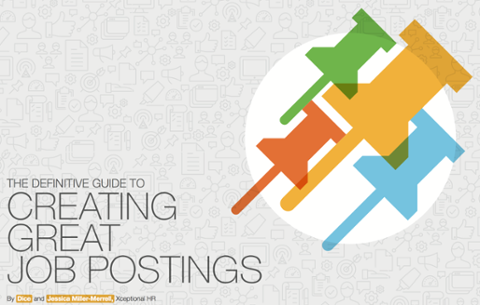
Although employers appear to be yielding to tech pros’ demands for a fair and transparent hiring process, many are still reluctant to put salary ranges in job postings. Whether they are hoping to find an amazing tech candidate for a bargain price, or afraid that disclosing generous starting salaries will send lower-paid employees rushing for the exits, what recruiters may not realize is that failing to disclose a salary is adversely affecting their ability to attract top technical talent according to Matt Sherman, engineering manager at Stack Overflow. Stack Overflow ran an A/B test, where half of job ads contained a salary range and the other half did not. Amazingly, the ads that featured a salary range experienced a 75 percent average increase in click-through rates. Even jobs that advertised salaries below $100,000 saw a 60 percent increase. What caused the dramatic increase? Sherman explained it this way: “Since many tech job seekers include salary information in their search criteria, they may not find a posting that lacks specific salary information.” In other words: “They may simply be choosing to focus on opportunities where they don’t have to guess about the starting salary.” So should recruiters include salary info in job postings, or not? Here’s a look at the pros, cons, myths and realities.
Benefits and Advantages
Not only does advertising a salary range build credibility with tech candidates, it also drives recruiting efficiency, said Dave Kerr, recruiting partner at tech recruiting firm Incendia Partners. Simply put, people who don’t fit the salary criteria don’t bother applying. “We’re able to spend more time qualifying a candidate’s non-monetary motives and look for synergies with the client company which leads to better matches,” Kerr said. Disclosing the salary is an attractor that opens the door to conversations about the things that make a career opportunity rewarding and unique, which is vital to winning top technical talent in a competitive area such as Boston or Cambridge, he added. From a tech pro’s perspective, companies that don’t list salaries could be testing the market—or worse, hiding something. Although it may not be fair or accurate, signaling that your company may have a transparency problem can repel top applicants. Many recruiters also fear that publishing attractive salaries will unleash a torrent of unqualified applicants… but it turns out that those fears are largely unfounded. For instance, while marketing and communications firm Proforma has experienced a rise in unqualified applicants in response to job postings with salary data – from roughly 25 percent to between 35 to 40 percent – the company has experienced an overall increase in recruiting efficiency, according to Jason Pindzia, director of Career Advancement. “Negotiations are much easier now that we publish salary ranges,” said Pindzia, who admits that he has turned from skeptic into enthusiast on the issue due to his experience. “My closing rate has jumped from the mid-40 percent range to 84 percent, so I’ve more than made up for the extra time I spend screening applicants.” Do candidates automatically expect an offer near the top of the range? No, but companies should still take care to be as transparent as possible about their formula. For example, managers could provide a list of criteria so tech pros can see exactly how a salary is determined for various roles.
Drawbacks and Issues
Of course, publishing salaries does have some drawbacks, but experts insist that those can be overcome or minimized. For example, it is certainly possible that firms with meager budgets could see a decrease in applicants if they advertise non-competitive salaries. However, the likelihood of convincing a money-driven tech pro with in-demand skills to accept a below-market offer is already slim. “If you’re $10,000 or more apart, it’s not going to happen,” Pindzia said. If you can’t offer Facebook-style salaries, publish a small salary range or an “up to” salary number; highlight bonuses, flex hours or other popular perks. Remember that candidates can generally find a company’s compensation information online, anyway. And with
states passing legislation allowing employees to share salary information, it’s getting more and more difficult to keep a lid on pay, so why try to hide it? If your current tech employees are underpaid, or you pay unequal wages for similar work and skills, then yes, publishing salaries may open a Pandora’s Box of issues. Getting your salary house in order and training managers how to discuss compensation with employees and applicants needs to happen first. But as Pindzia points out, putting pay policies in place and learning how to discuss compensation with candidates and employees is not “necessarily a bad thing.” Finally, your competitors probably have a pretty good idea what you’re paying, but a shrewd recruiter may use more specific salary data to create detailed side-by-side comparisons that expose differences in packages, or they may offer an extra incentive such as a signing bonus or transportation allowance to win over a top candidate. What’s the biggest challenge of all? Being a change agent. “I had to convince a lot of people,” Sherman said. “But embracing pay transparency has been a positive change, once we put the larger processes in place.”

 Although employers appear to be yielding to tech pros’ demands for a fair and transparent hiring process, many are still reluctant to put salary ranges in job postings. Whether they are hoping to find an amazing tech candidate for a bargain price, or afraid that disclosing generous starting salaries will send lower-paid employees rushing for the exits, what recruiters may not realize is that failing to disclose a salary is adversely affecting their ability to attract top technical talent according to Matt Sherman, engineering manager at Stack Overflow. Stack Overflow ran an A/B test, where half of job ads contained a salary range and the other half did not. Amazingly, the ads that featured a salary range experienced a 75 percent average increase in click-through rates. Even jobs that advertised salaries below $100,000 saw a 60 percent increase. What caused the dramatic increase? Sherman explained it this way: “Since many tech job seekers include salary information in their search criteria, they may not find a posting that lacks specific salary information.” In other words: “They may simply be choosing to focus on opportunities where they don’t have to guess about the starting salary.” So should recruiters include salary info in job postings, or not? Here’s a look at the pros, cons, myths and realities.
Although employers appear to be yielding to tech pros’ demands for a fair and transparent hiring process, many are still reluctant to put salary ranges in job postings. Whether they are hoping to find an amazing tech candidate for a bargain price, or afraid that disclosing generous starting salaries will send lower-paid employees rushing for the exits, what recruiters may not realize is that failing to disclose a salary is adversely affecting their ability to attract top technical talent according to Matt Sherman, engineering manager at Stack Overflow. Stack Overflow ran an A/B test, where half of job ads contained a salary range and the other half did not. Amazingly, the ads that featured a salary range experienced a 75 percent average increase in click-through rates. Even jobs that advertised salaries below $100,000 saw a 60 percent increase. What caused the dramatic increase? Sherman explained it this way: “Since many tech job seekers include salary information in their search criteria, they may not find a posting that lacks specific salary information.” In other words: “They may simply be choosing to focus on opportunities where they don’t have to guess about the starting salary.” So should recruiters include salary info in job postings, or not? Here’s a look at the pros, cons, myths and realities.


